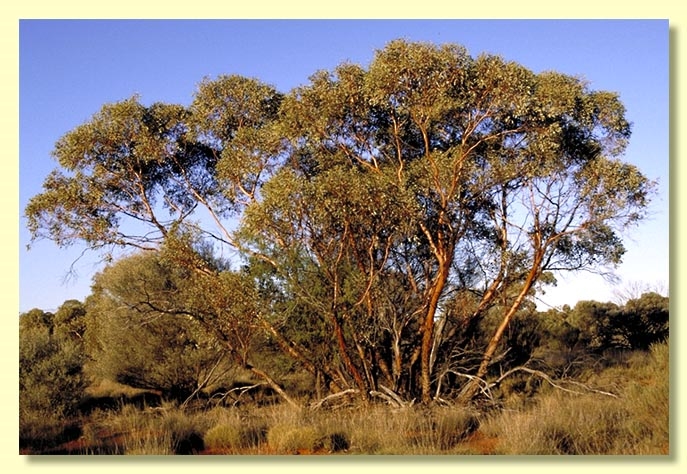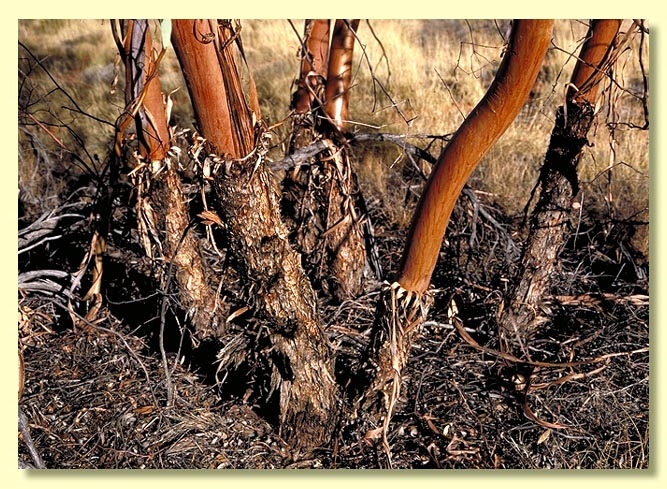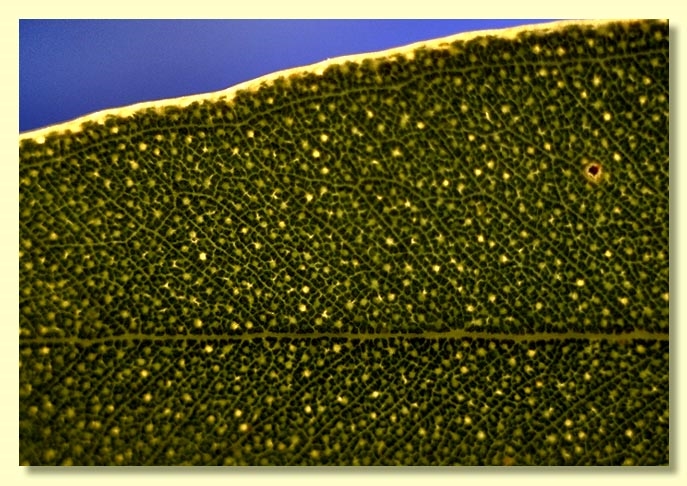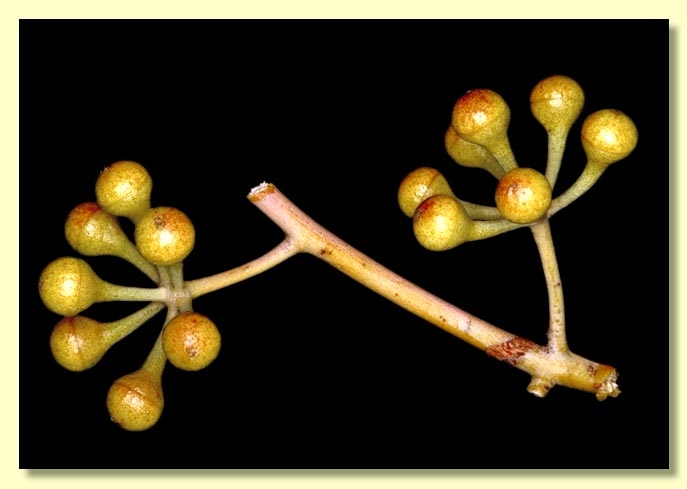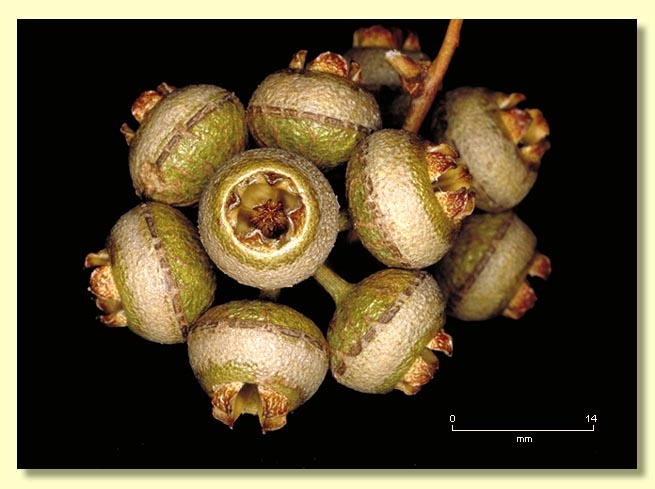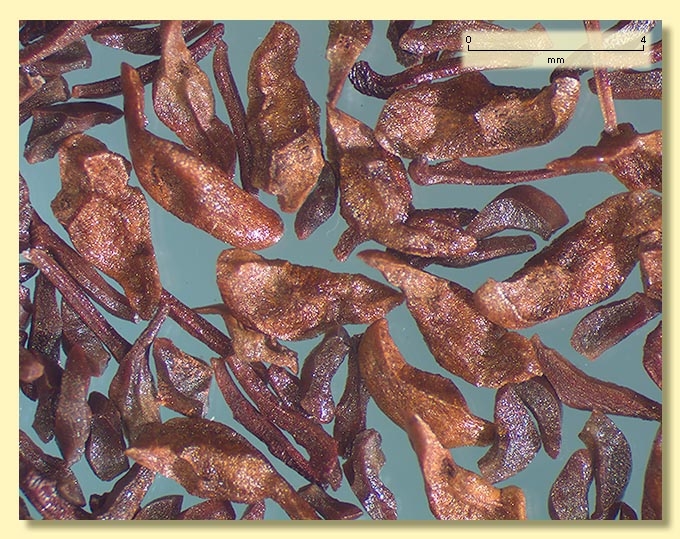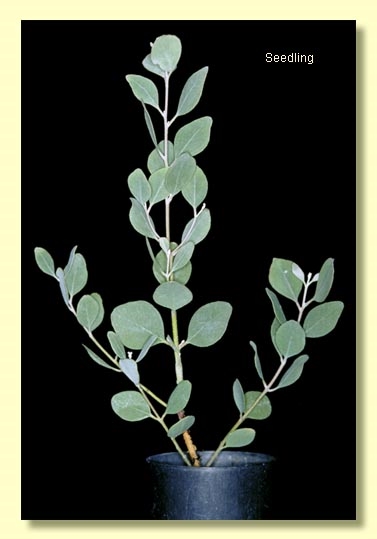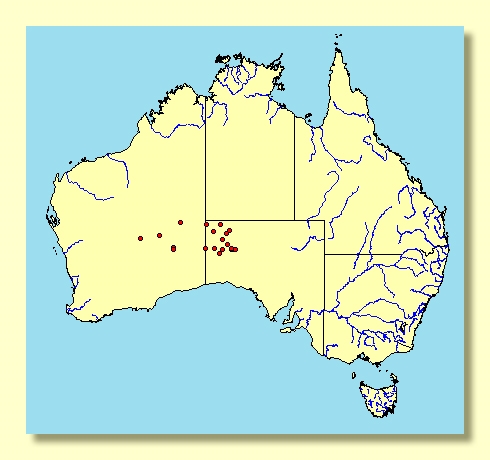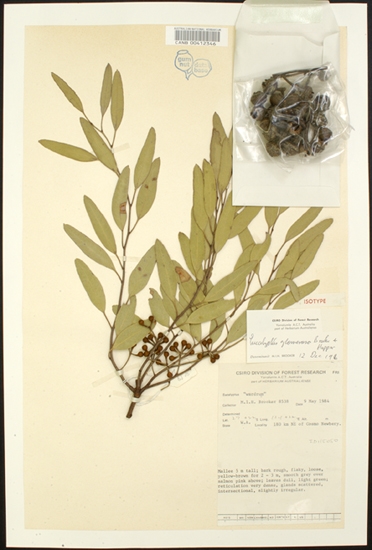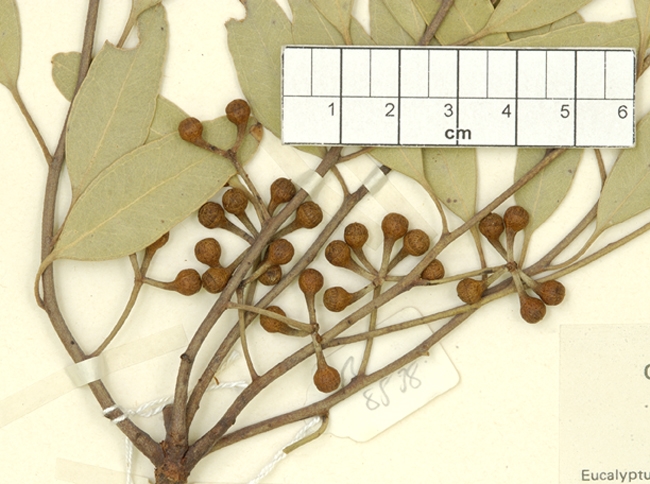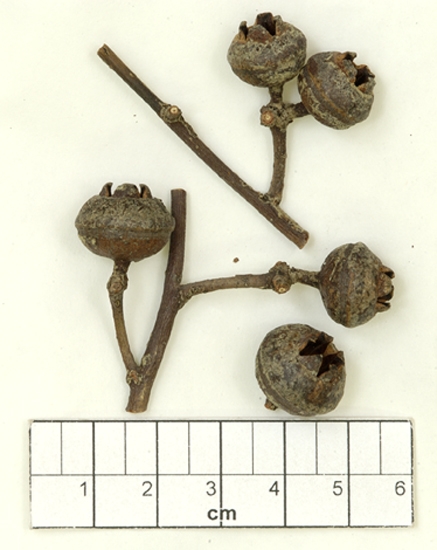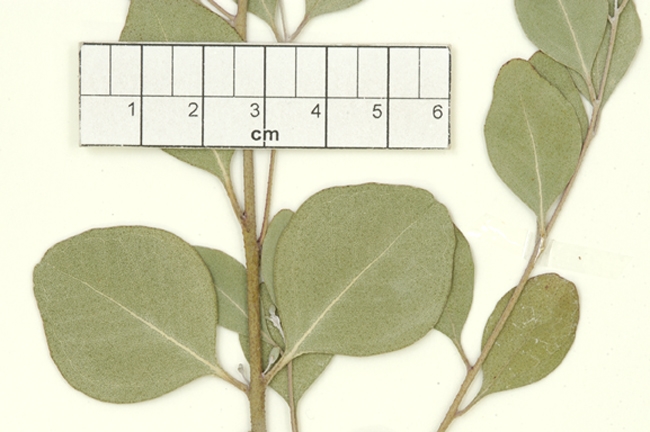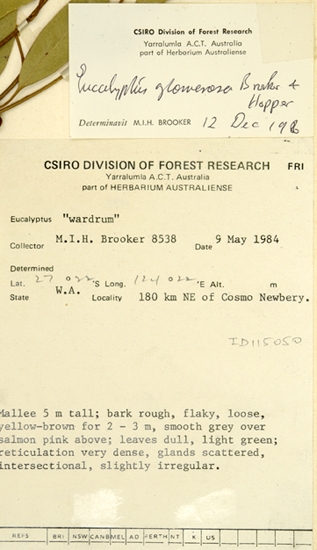Euclid - Online edition
Eucalyptus glomerosa
Eucalyptus | Symphyomyrtus | Bisectae | Destitutae | Curviptera | Glomerosae
Bark rough for basal 0.5–3 m of stems, matted and fibrous to thick, loose and flaky, yellow-brown weathering grey, smooth above coppery-orange to salmon pink.
Branchlets sometimes glaucous; lacking oil glands in the pith.
Juvenile growth (coppice or field seedlings to 50 cm): stems rounded in cross-section, glaucous or non-glaucous, slightly warty to smooth; juvenile leaves always petiolate, alternate, elliptical to ovate to lanceolate, 2.5–7 cm long, 1–3.3 cm wide, dull, grey-green.
Adult leaves alternate, petioles 0.8–2.5 cm long; blade lanceolate to elliptical, at times narrowly so, 3.8–9.5 cm long, 0.8–2.3 cm wide, base tapering to petiole, margin entire, apex rounded to pointed, concolorous, dull, blue-grey to light green, side-veins greater than 45° to midrib, reticulation dense to very dense, intramarginal vein close to margin, oil glands intersectional. New growth in crown often with glaucous tinge but soon lost as leaves mature.
Inflorescence axillary unbranched, peduncles 1–3 cm long, buds 7(11) per umbel, pedicels 0.4-0.9 cm long. Mature buds globose (0.5–0.7 cm long, 0.5–0.6 cm wide), scar present, operculum rounded and usually apiculate (0.3 cm long), stamens oblique, anthers cuboid, versatile, ± basifixed, dehiscing by longitudinal slits, style long and straight, stigma blunt, locules 4(5), the placentae each with 4 vertical rows of ovules with a central gap. Flowers not seen.
Fruit pedicellate (pedicels 0.4–0.9 cm long), shallowly and broadly obconical to hemispherical, 0.3–0.7 cm long, 0.7–1.4 cm wide, disc ascending steeply, valves 4(5), prominently exserted.
Seeds straw-coloured to brown, 3–5 mm long, obliquely elongated with a small tongue-like flange, obscurely ribbed ventrally, dorsal surface smooth, hilum terminal.
Cultivated seedlings (measured at node 10): cotyledons Y-shaped (bisected); stems rounded in cross-section, warty, sometimes slightly glaucous; leaves always petiolate, opposite for 7 to 10 nodes then alternate, orbicular to broadly elliptical or ovate, 3–4.5 cm long, 1.3–4 cm wide, dull, greyish green or slightly glaucous.
Flowering has been recorded in February and March.
A mallee of the Great Victoria Desert of north-western South Australia and eastern Western Australia, from the Mann Range, Mt Lindsay and Emu west to Neale Junction and Cosmo Newberry. It is often on red sand, on dunes or between them. The bark is thick, flaky and rough on the lower part of the stems and the adult leaves dull, light green and pedicellate globular buds.
Eucalyptus glomerosa belongs in Eucalyptus subgenus Symphyomyrtus section Bisectae subsection Destitutae because buds have two opercula, cotyledons are Y-shaped and branchlets lack oil glands in the pith. Within this subsection E. glomerosa is in series Curviptera, one of about 30 closely related species and subspecies which are further characterised by having large buds in umbels of one, three or seven, staminal filaments erect or oblique (rarely inflexed) in bud, and large fruit usually with an ascending disc and exserted valves.
E. glomerosa is distinguished from related species in series Curviptera by its unusual seed shape—an elongated distorted pyramid shape with a small tongue on one side. Until recently E. glomerosa was called E. ewartiana in South Australia because of similarities in habit, bud and fruit morphology. However E. ewartiana is easily distinguished from E. glomerosa by the minnirichi bark, and to a lesser extent by the larger adult leaves. The fruit of the two species can also be distinguished. The pedicels of E. glomerosa meet the underside of the fruit without widening while the pedicels of E. ewartiana widen where they meet the base of the fruit.

